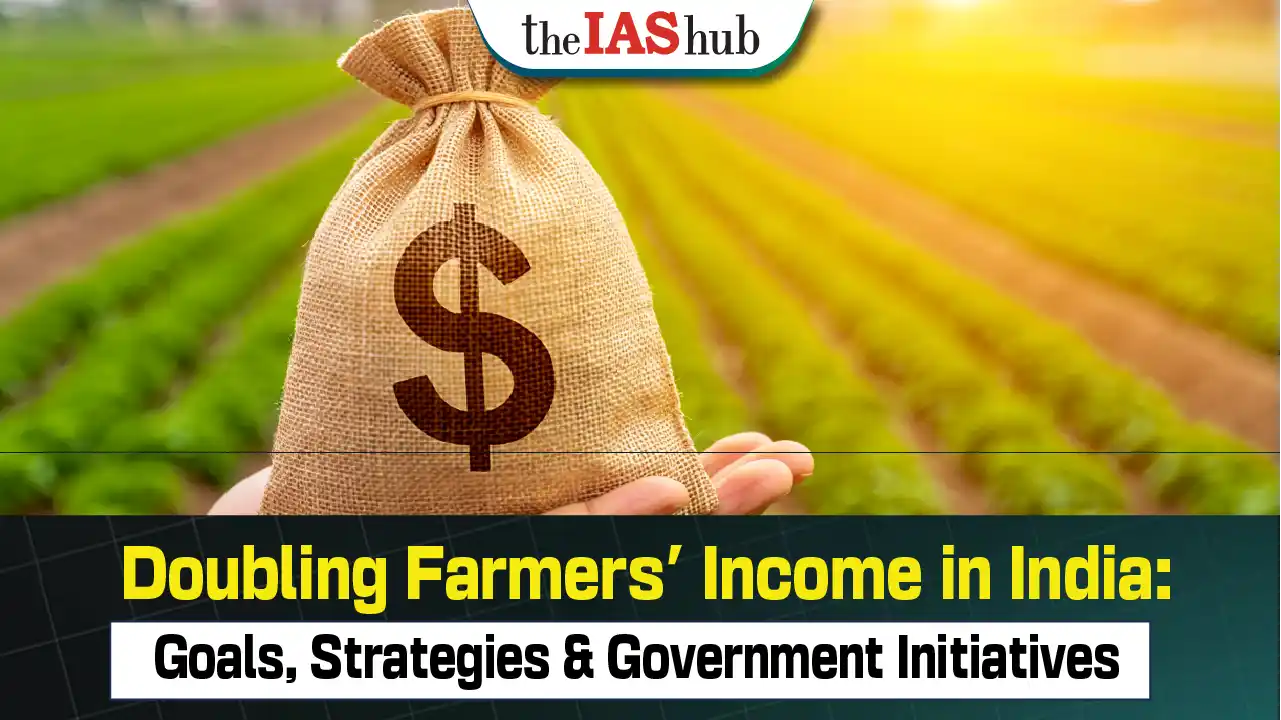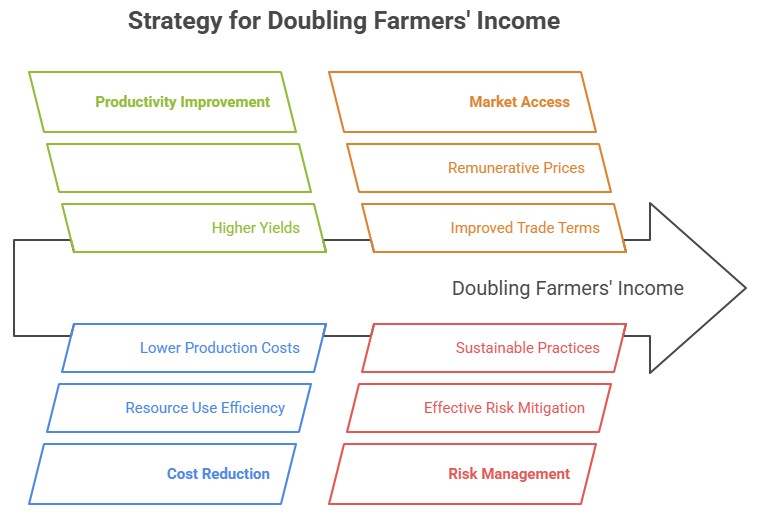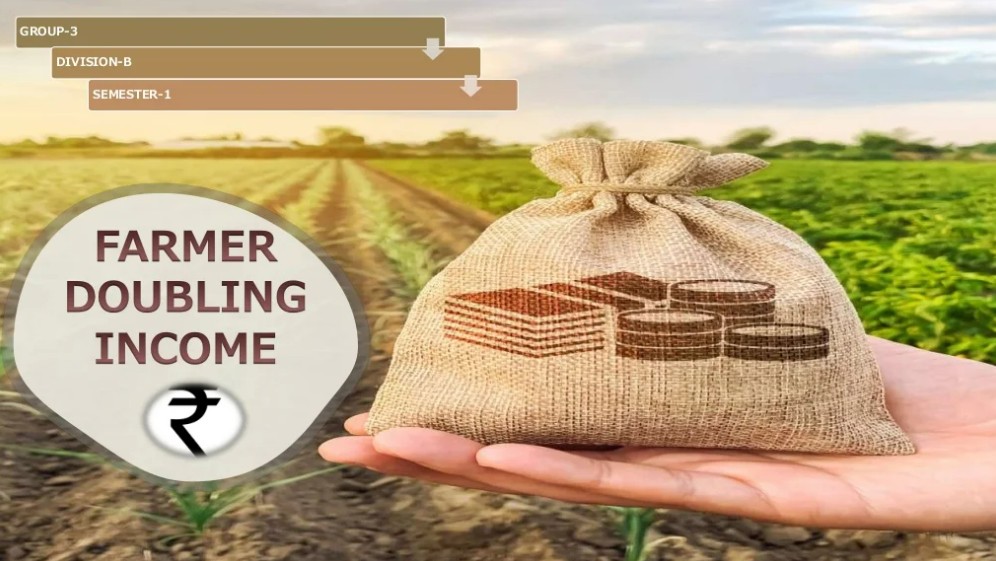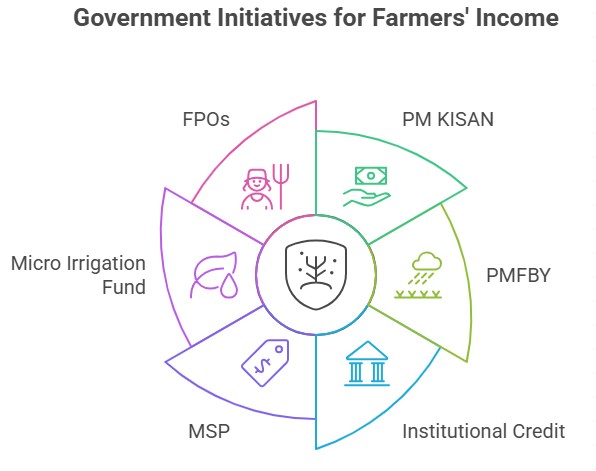Explore India's mission to double farmers' income by 2022 through productivity growth, crop diversification, fair pricing, and reforms. Learn key strategies, challenges, and government schemes like PM-KISAN and MSP to boost farm incomes sustainably.


Doubling Farmers’ Income is a flagship initiative by the Government of India aimed at improving the economic well-being of farmers. It focuses on increasing agricultural productivity, reducing costs, ensuring fair prices, and diversifying income sources.
|
As per the survey results, the average monthly income per agricultural household, from all sources, was estimated at ?10,218 when compared to ?6,426 in 2012-13. In other words, the farm income had risen by 59 per cent till 2019. |
The premise of the strategy for doubling farmers income is based on the following primary principles:


Government Initiatives Supporting Doubling Farmers' Income
 |
It is apparent that income earned by a farmer from agriculture is crucial to address agrarian distress (Chand 2016) and promote farmers welfare. In this background, the goal set to double farmers' income by 2022-23 is central to promote farmers welfare, reduce agrarian distress and bring parity between income of farmers and those working in non-agricultural professions.


Refine your answer writing skills and elevate your UPSC preparation with personalized support and expert feedback.
Fill out the form to get started with the program or any other enquiries !








Are you dreaming of becoming an IAS officer? Then, IAShub can be your best guide. It is one of the Best IAS Coaching in Delhi. Many students who want to clear the UPSC exam join IAShub for learning. The institute gives both online and offline classes. Their teachers are experienced and helpful. They easily explain every topic. Students also get notes, tests, and tips to do well in the exam.
IAShub is in Delhi and is trusted by many UPSC students. It offers coaching for every part of the UPSC exam – Prelims, Mains, and Interview. The classes are simple and easy to understand. The teachers are experts and guide students in the right way. IAShub is also known for its helpful notes, test series, and answer-writing practice. IAShub is the best coaching in Delhi and also gives UPSC Online Classes. This helps students from any place in India to learn. The online classes are live and also recorded. So, students can watch them anytime. These classes cover the full UPSC syllabus.
Here are some important services provided by IAShub:
The UPSC Civil Services Exam has three parts:
This exam is tough, but with the right guidance, it becomes easy to manage. Students must study smart and stay regular.
IAShub supports students from the beginning to the end. It gives the right books, tests, and notes. The classes are easy to follow, and the teachers are always ready to help. Students get personal doubt sessions too. The test series and answer checking help students learn where they need to do better. Also, free study materials save time and money.
IAShub also guides students during the final stage – the interview. Experts take mock interviews and give useful tips. This full support makes IAShub one of the best IAS coaching in Delhi.